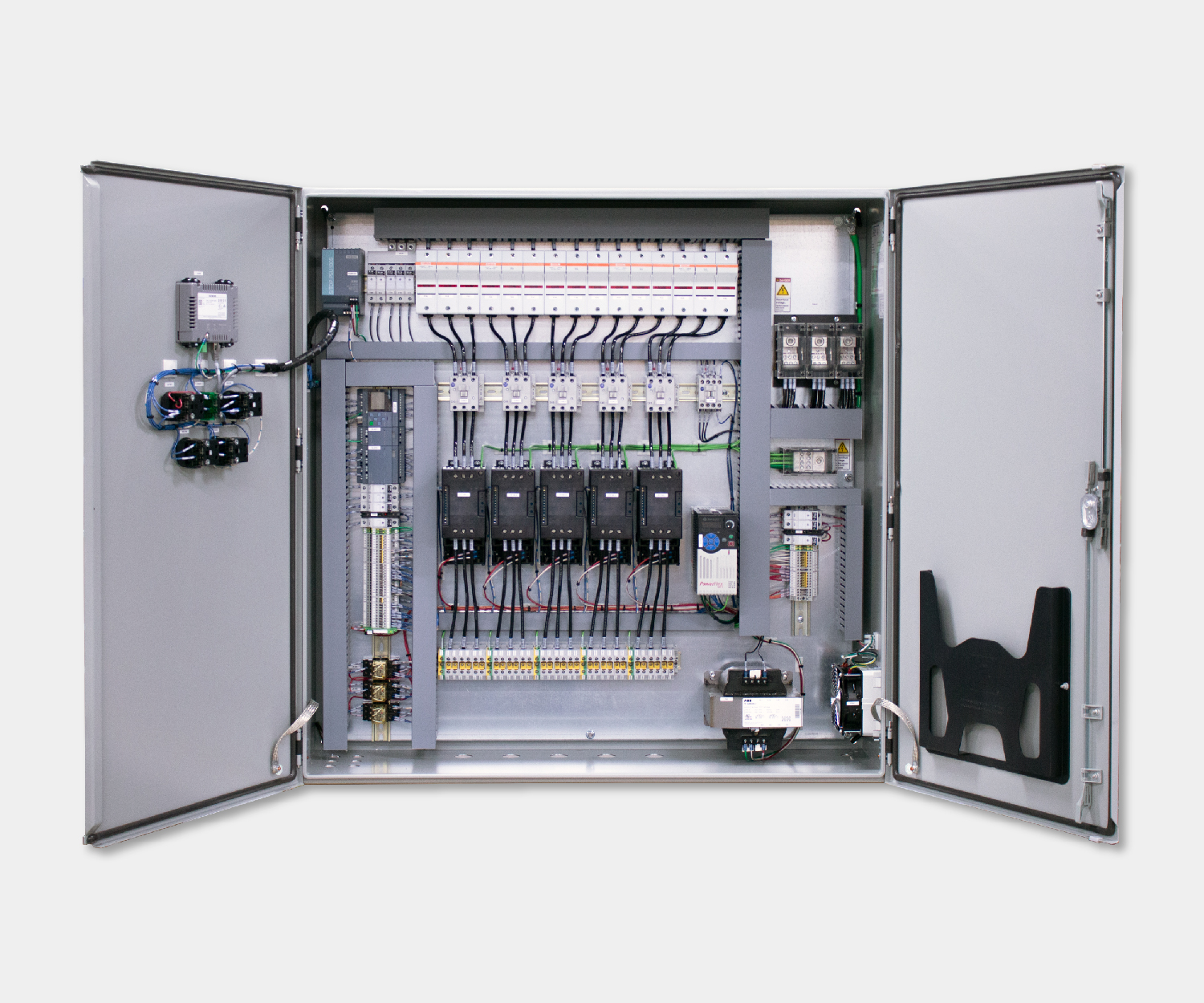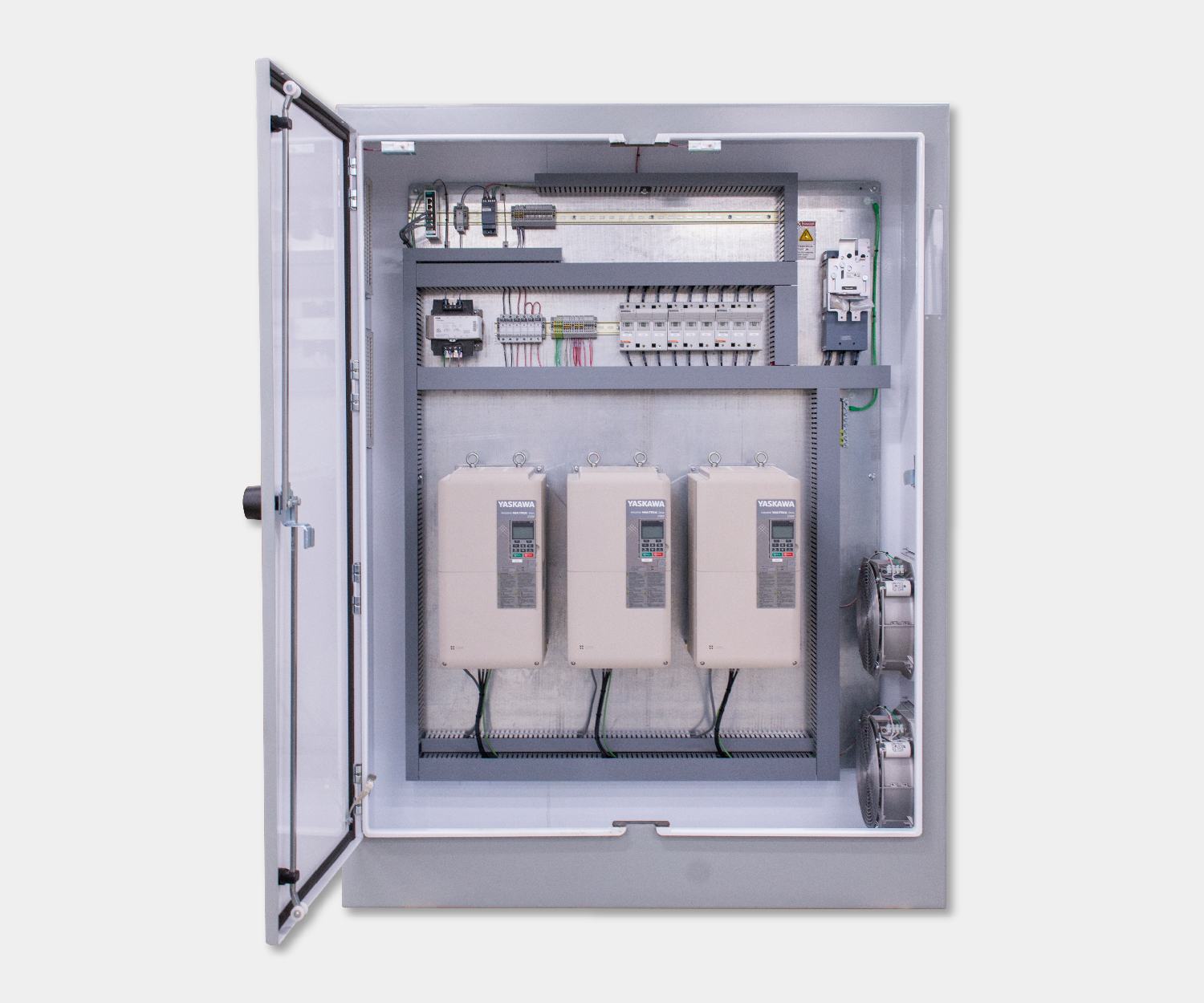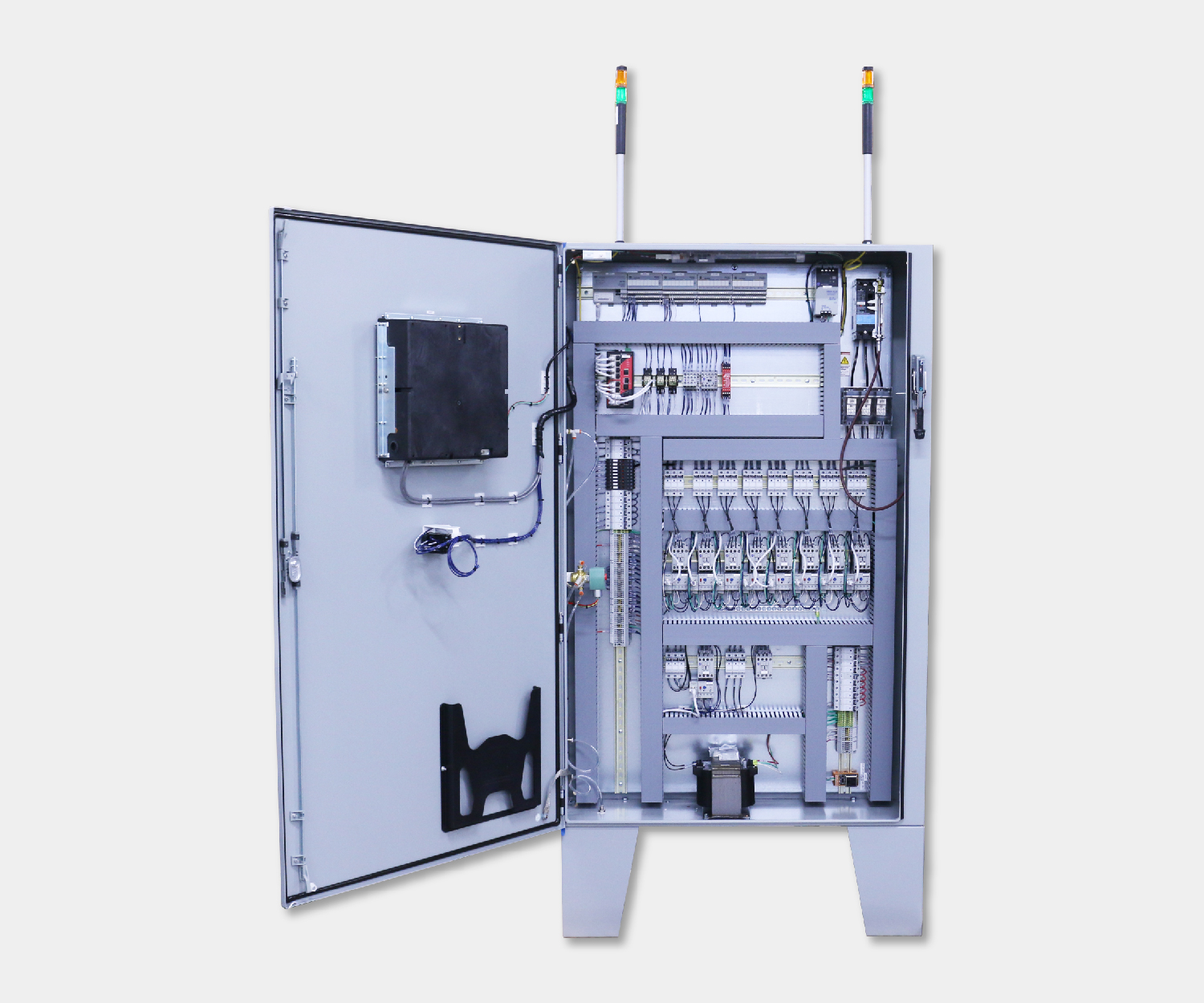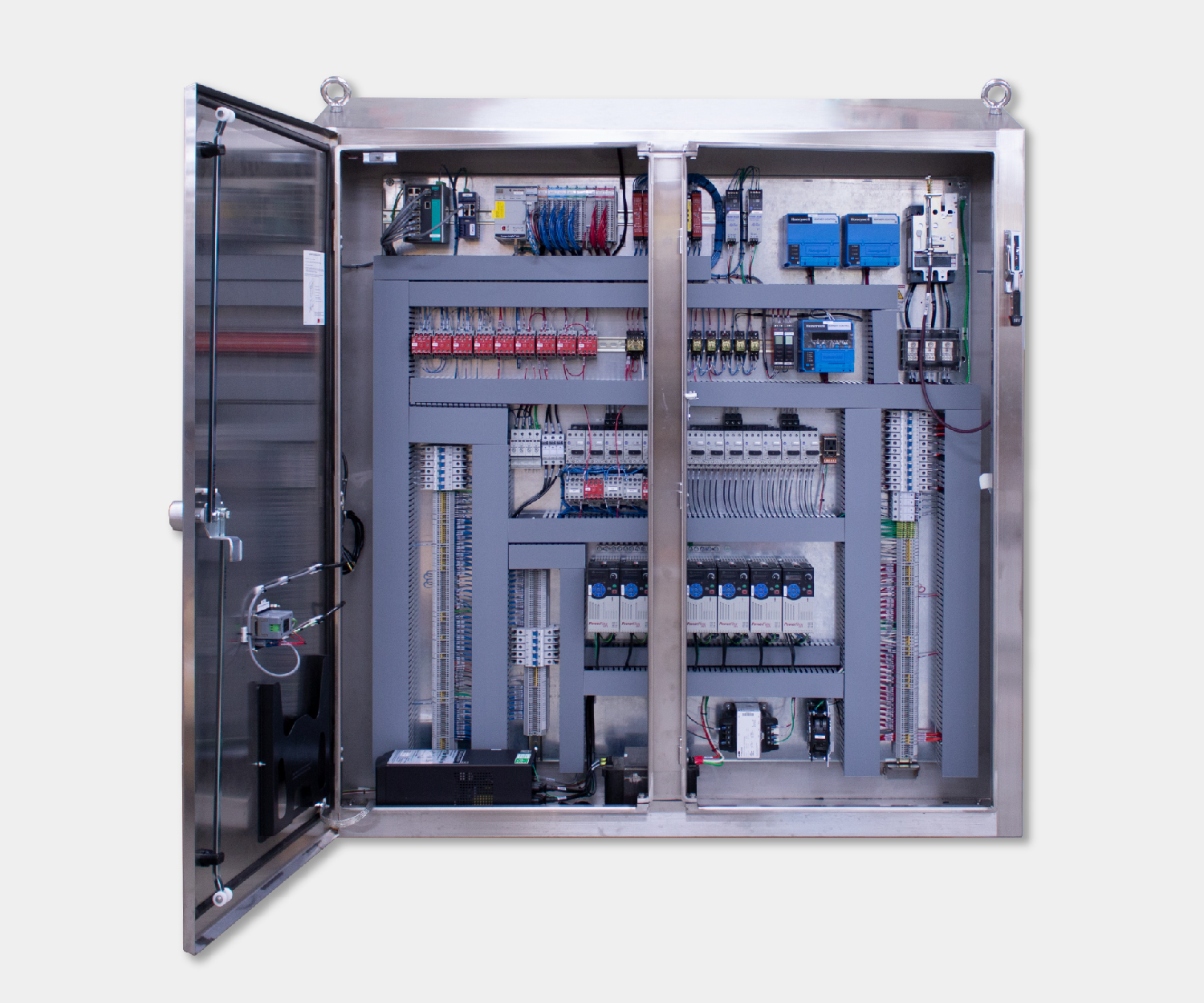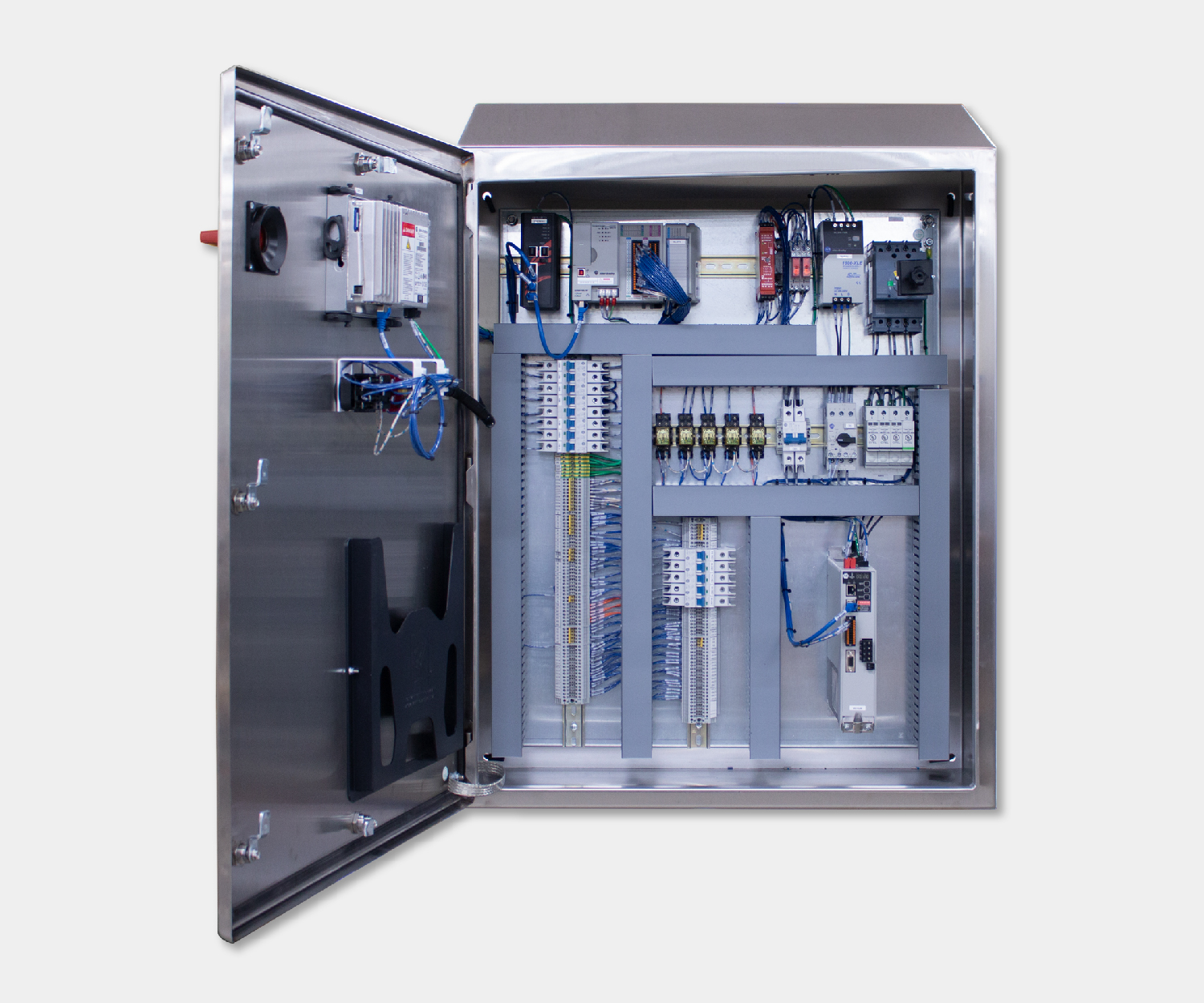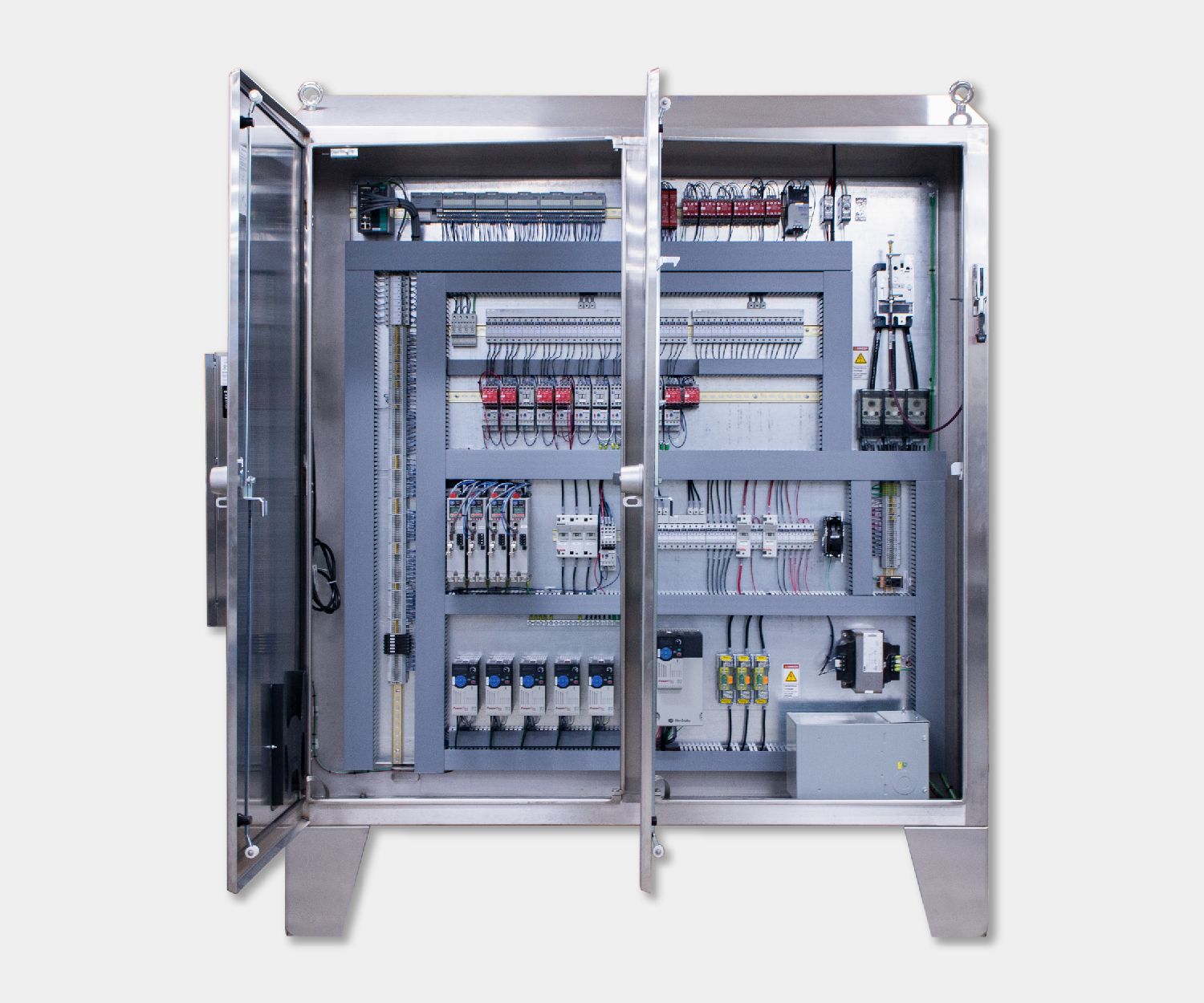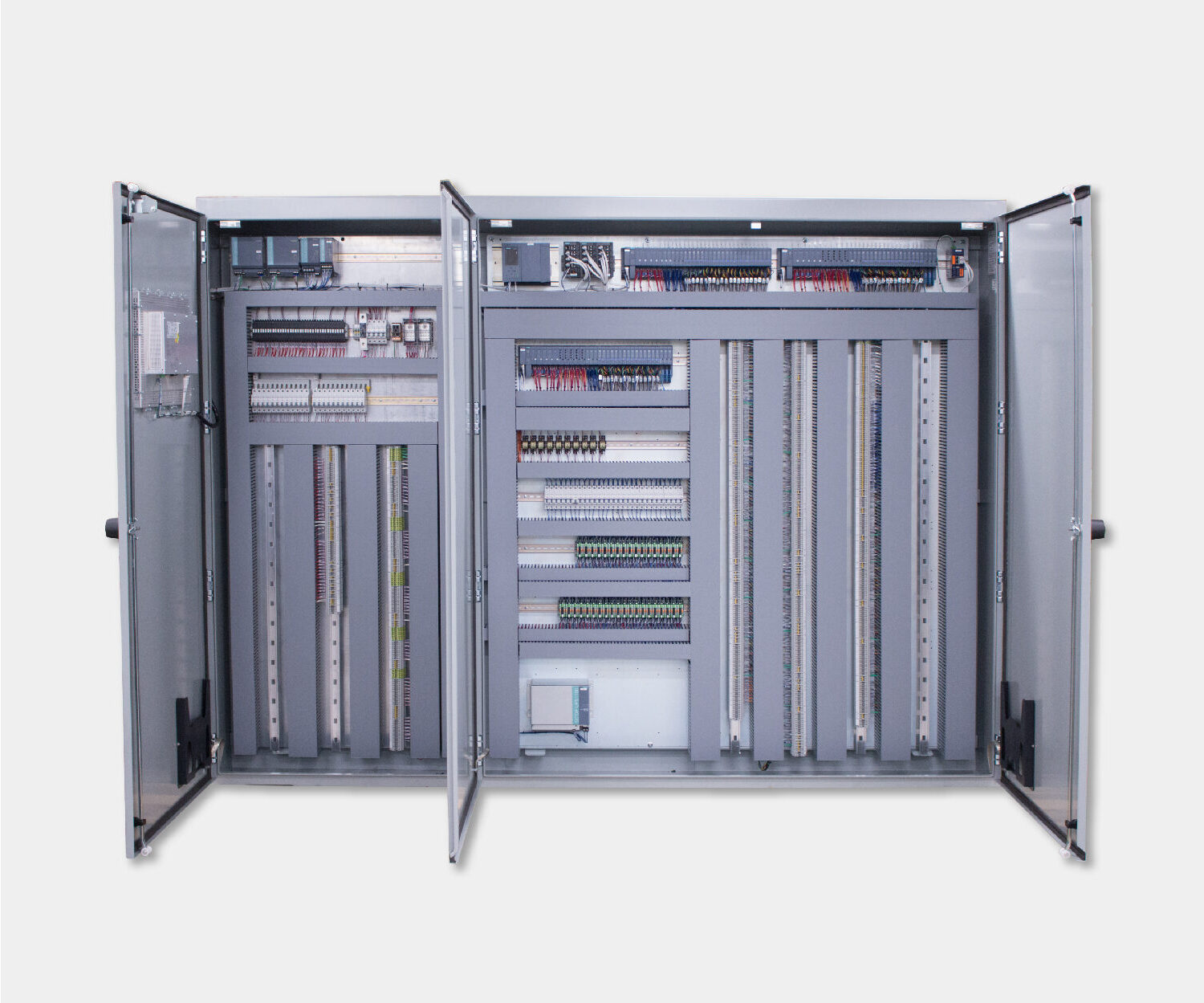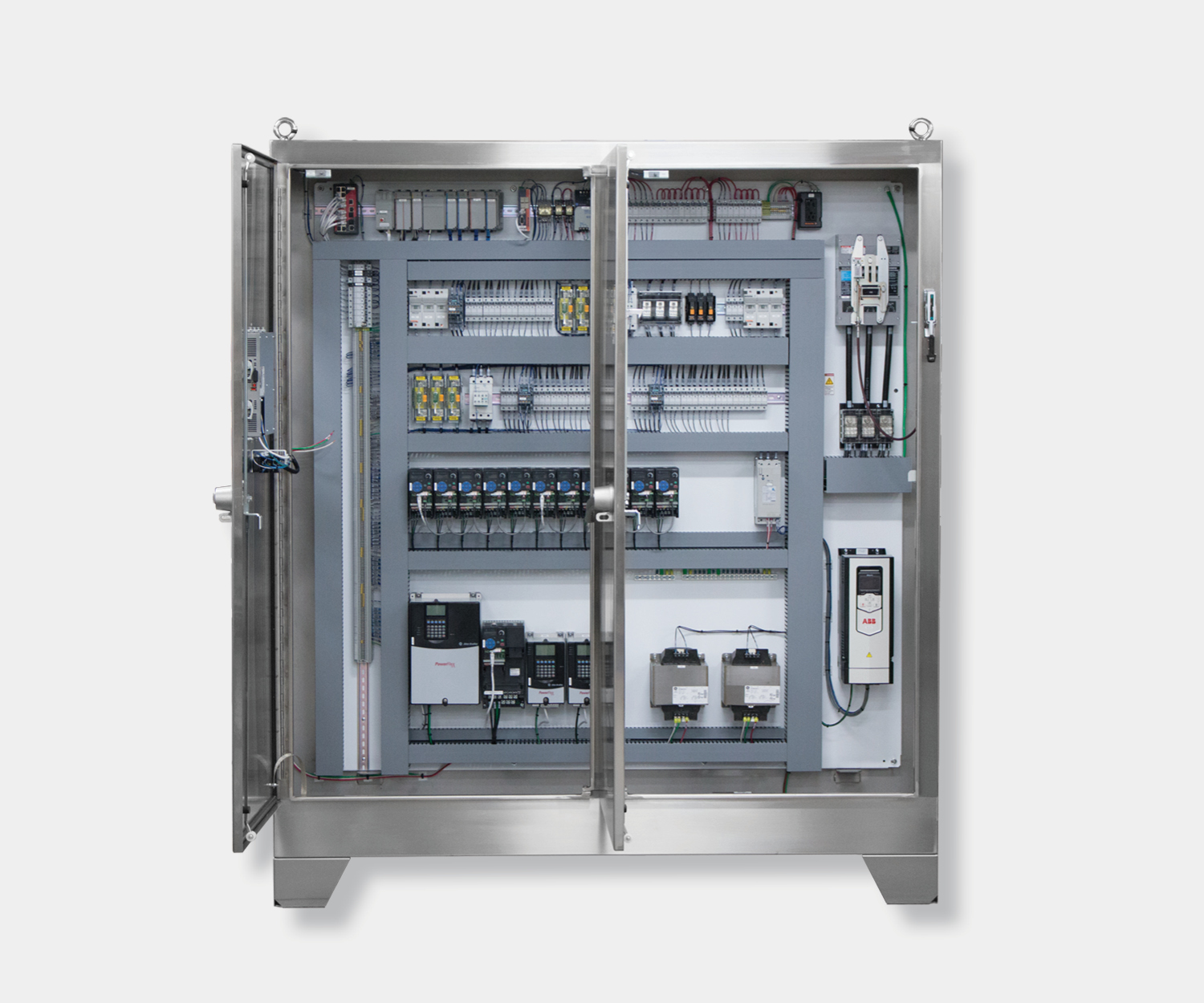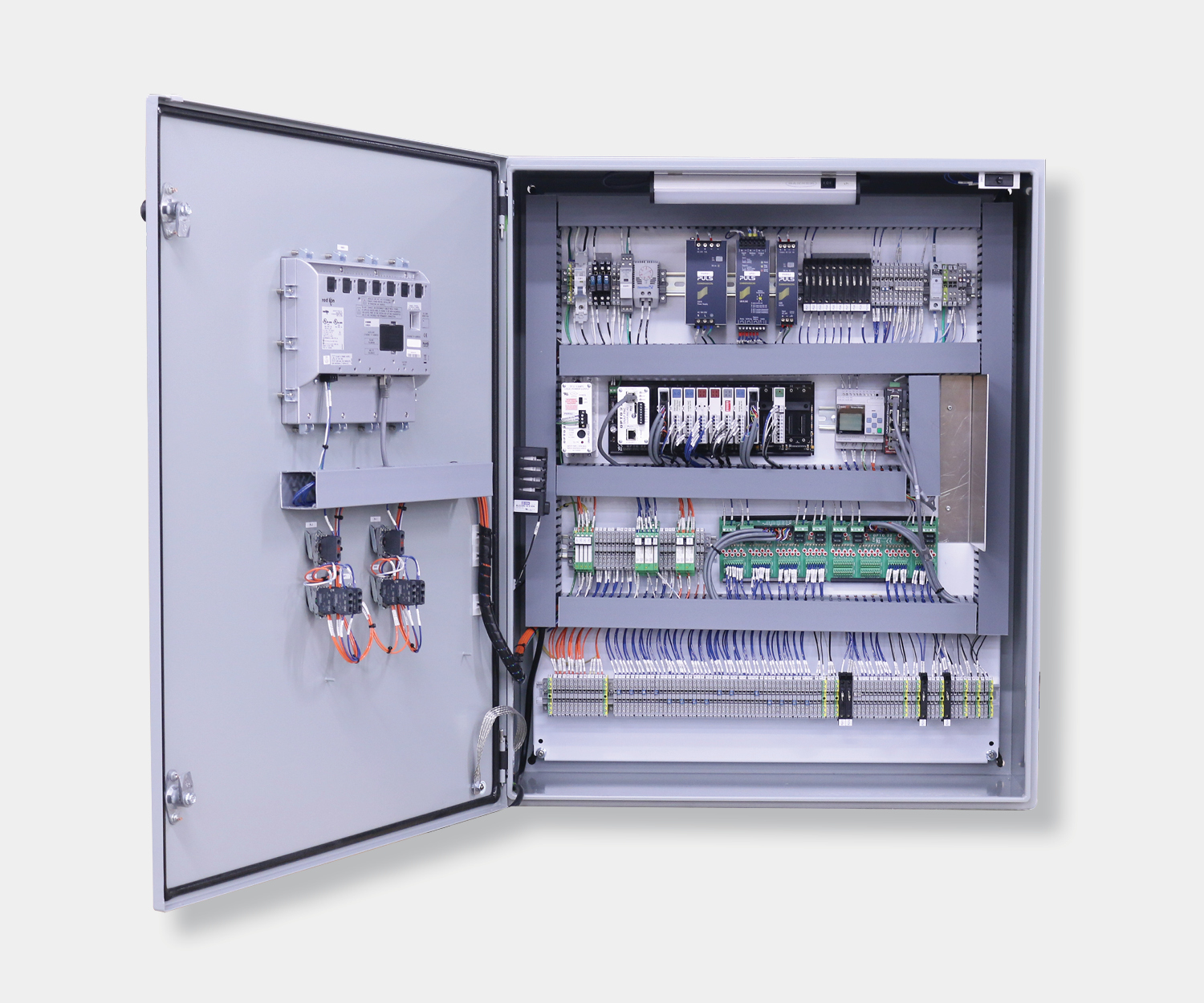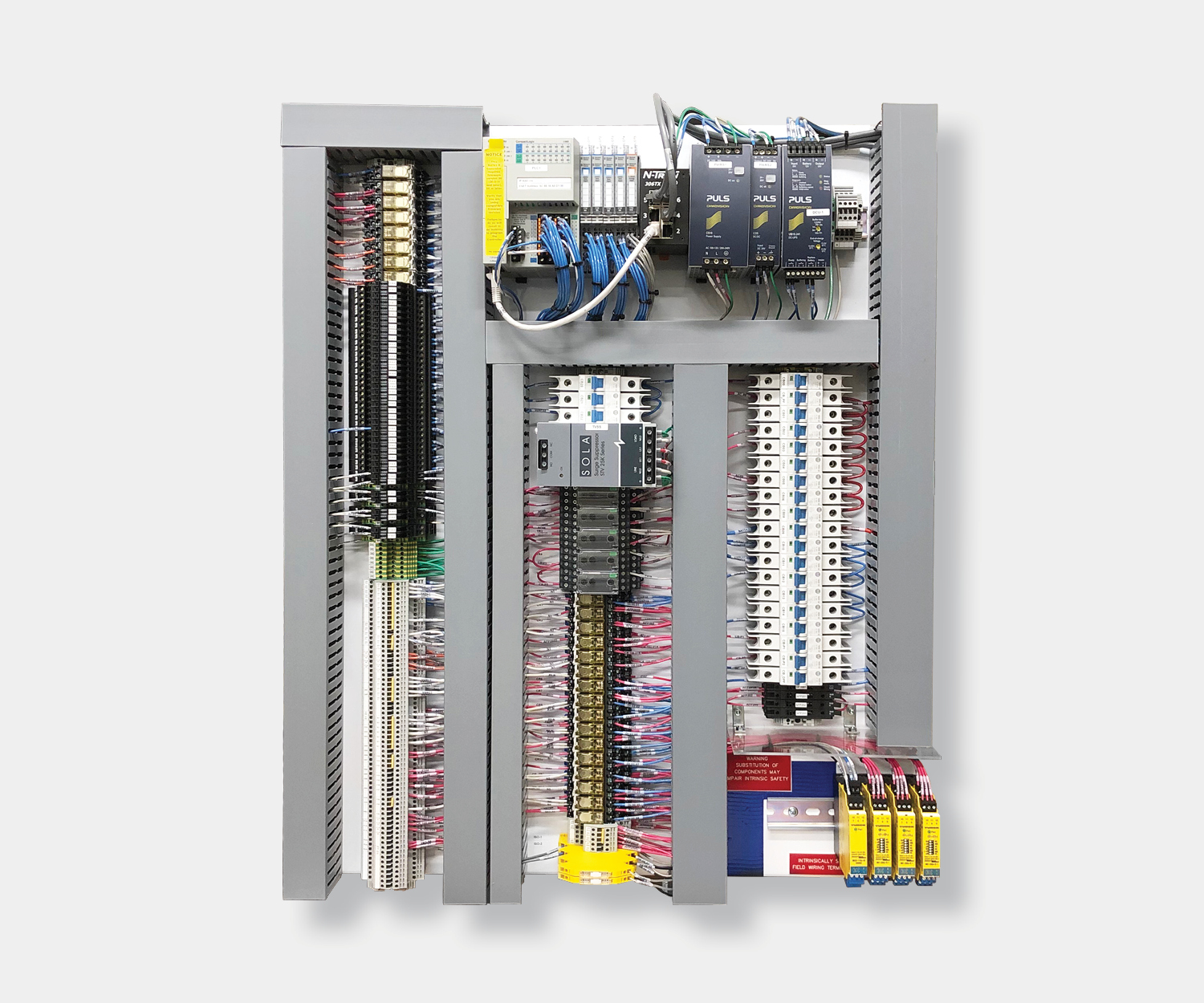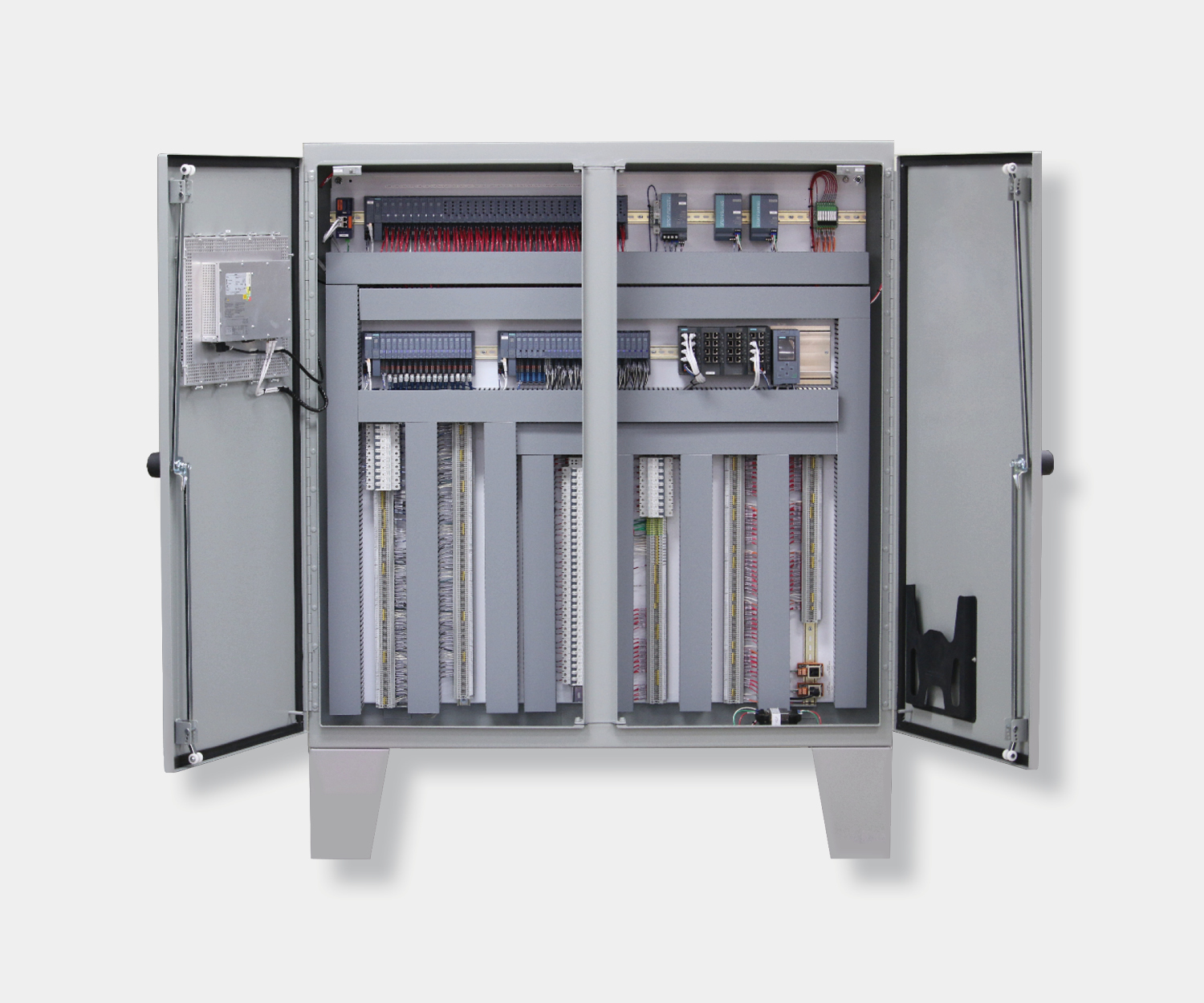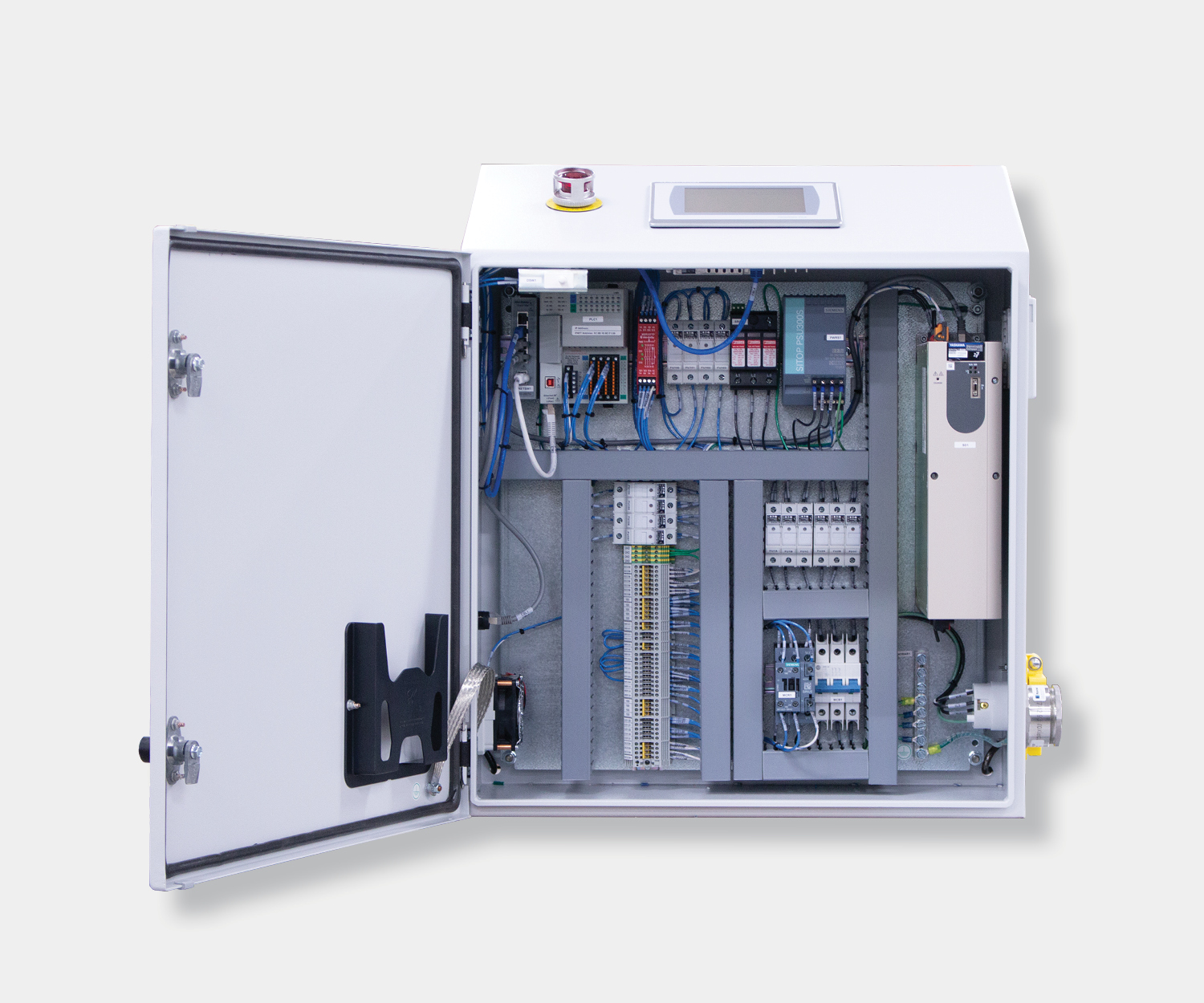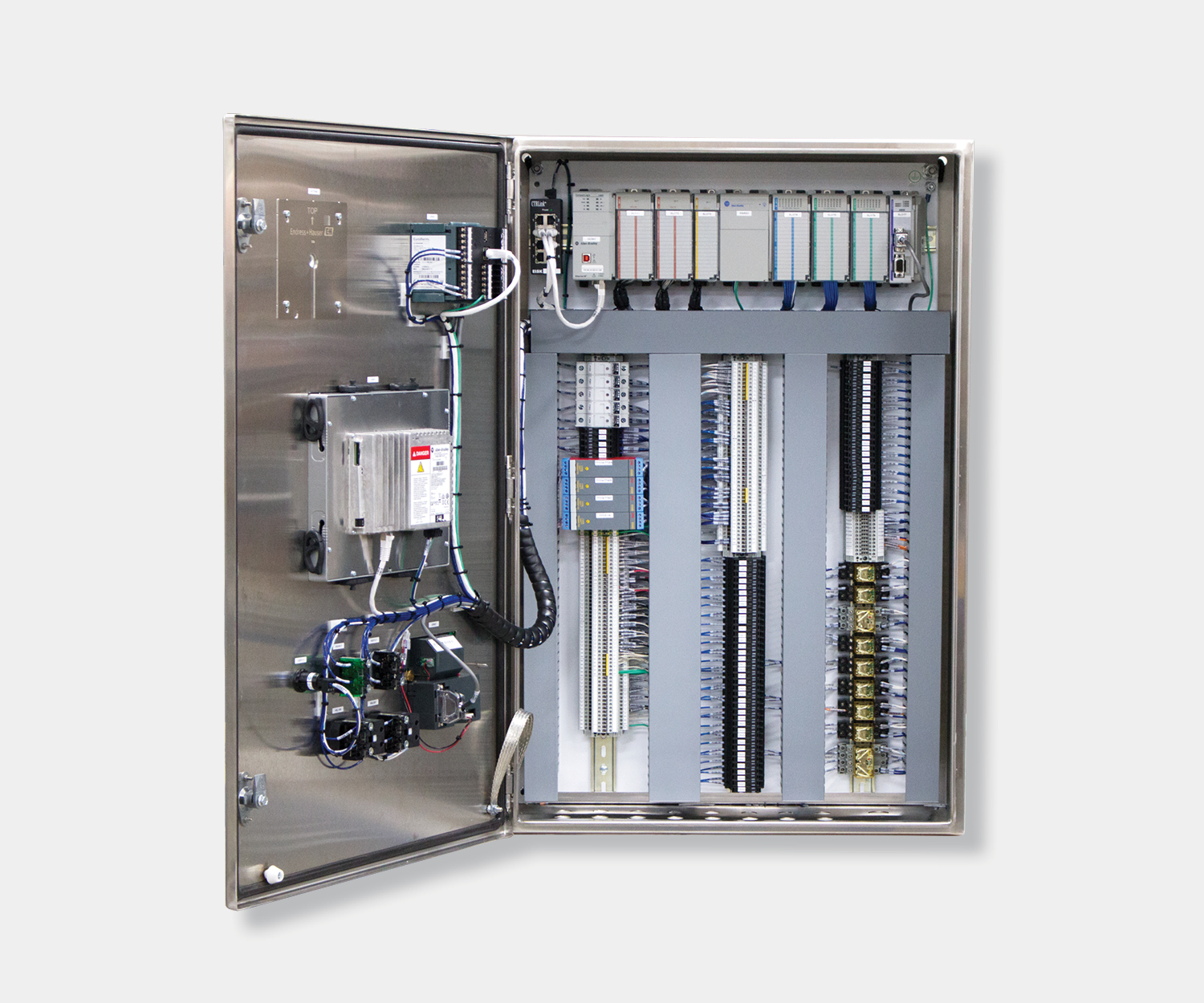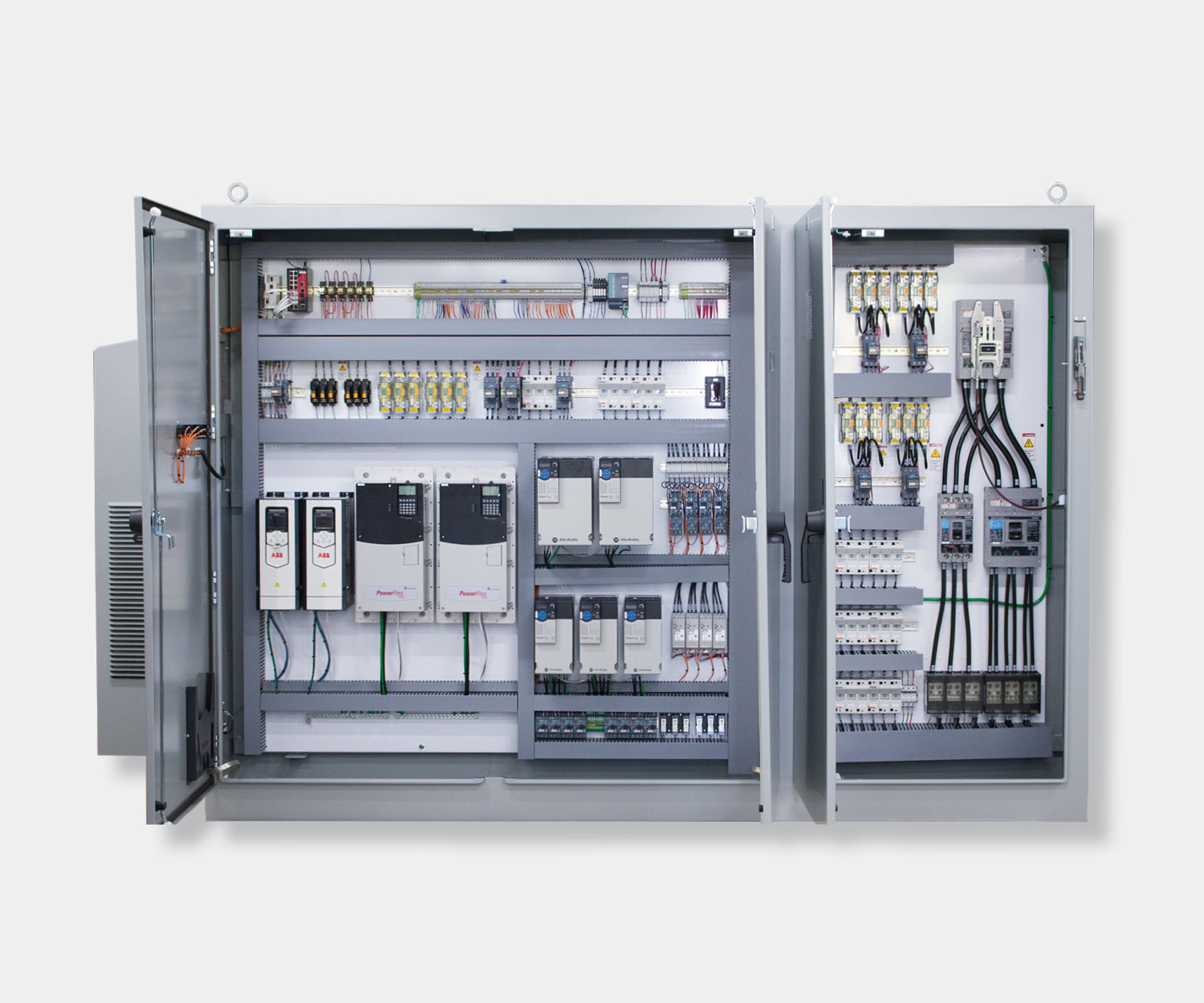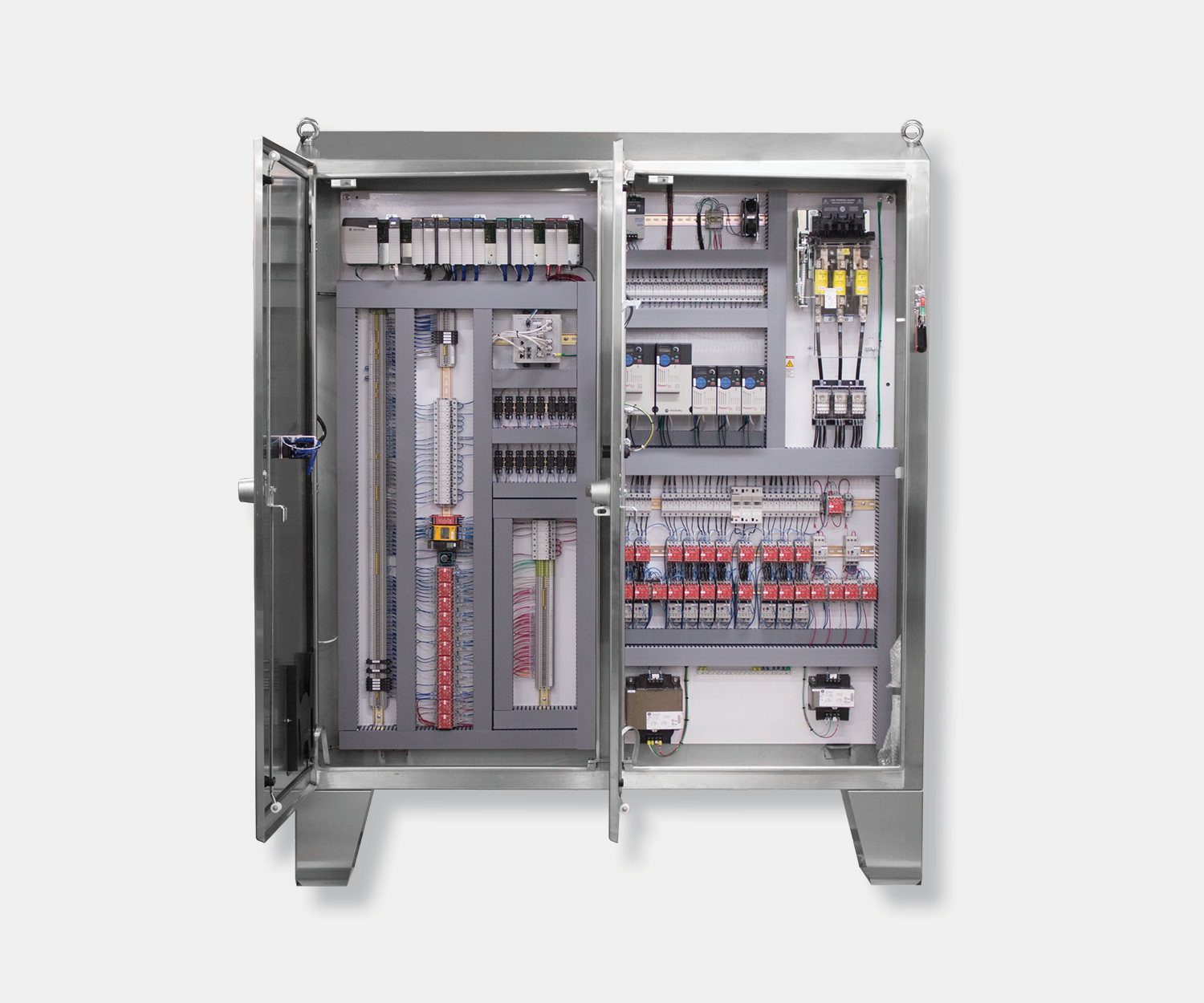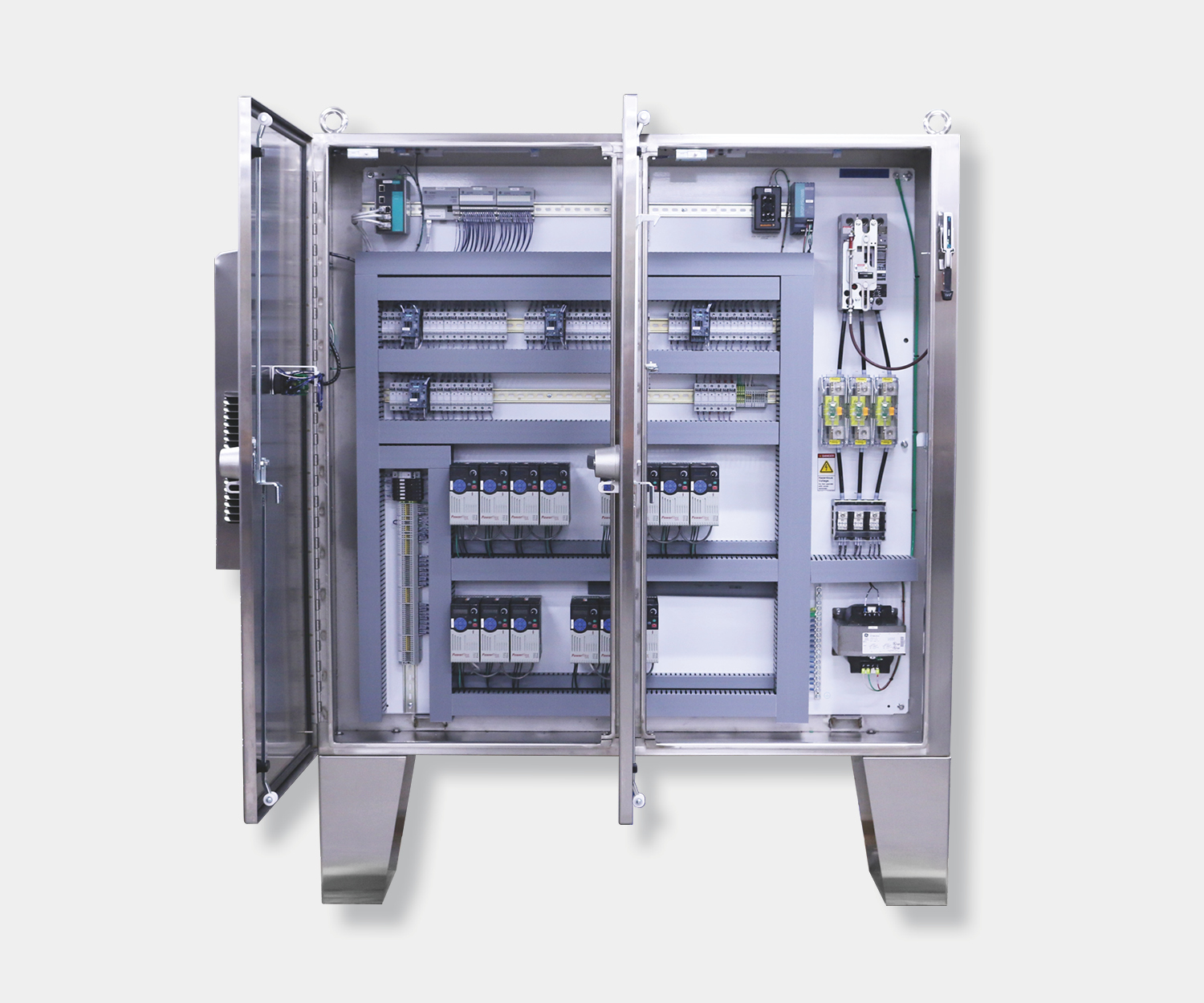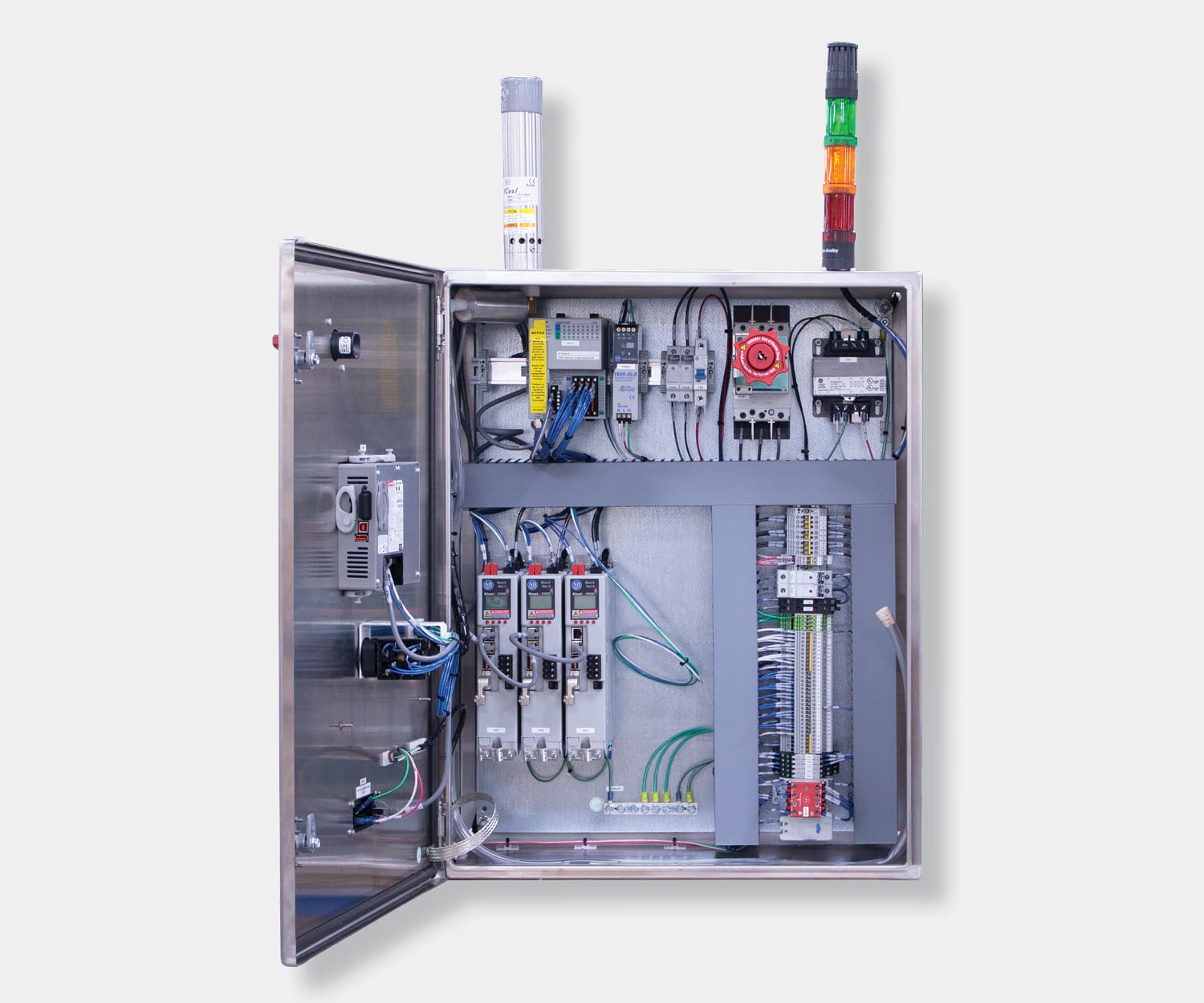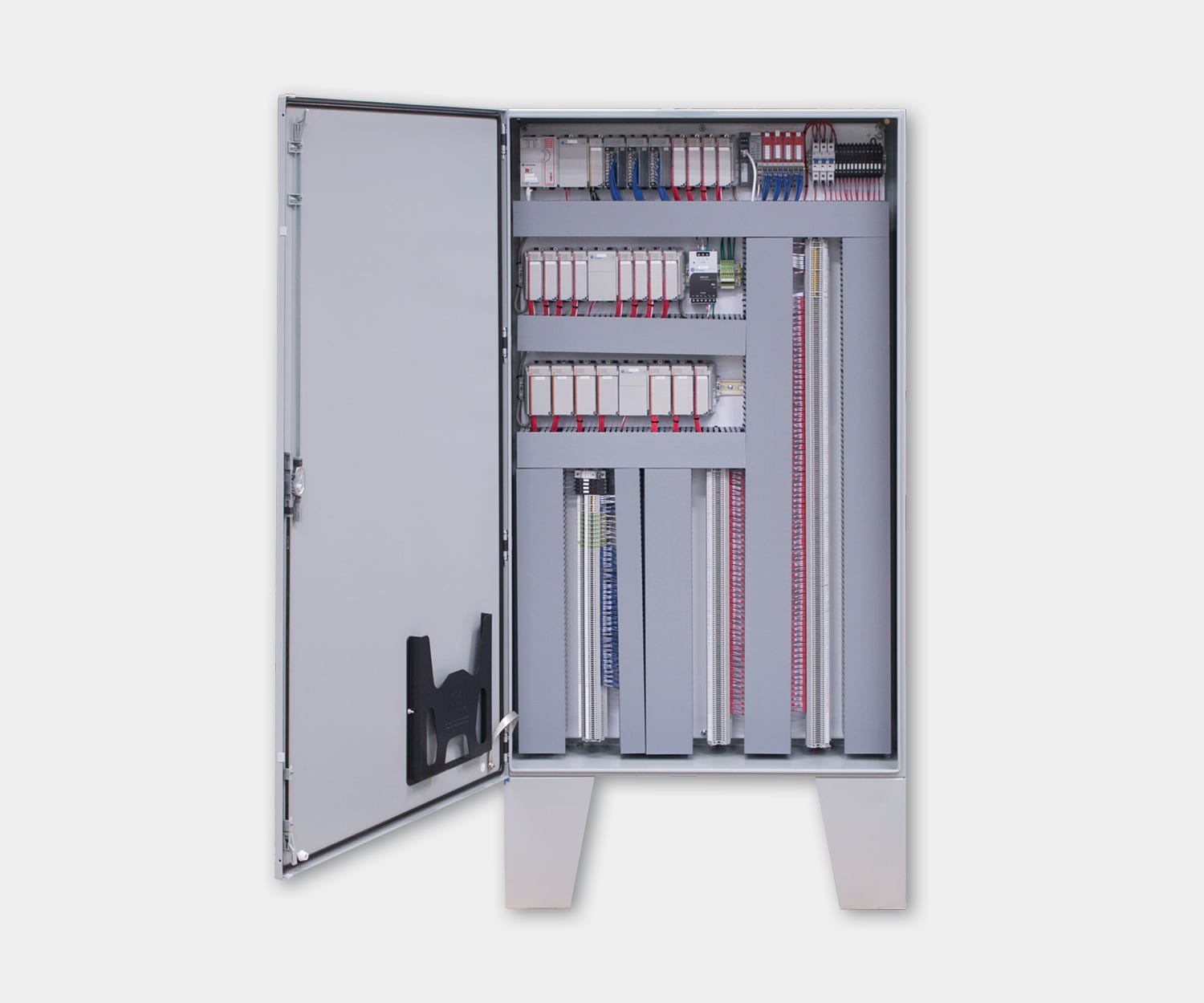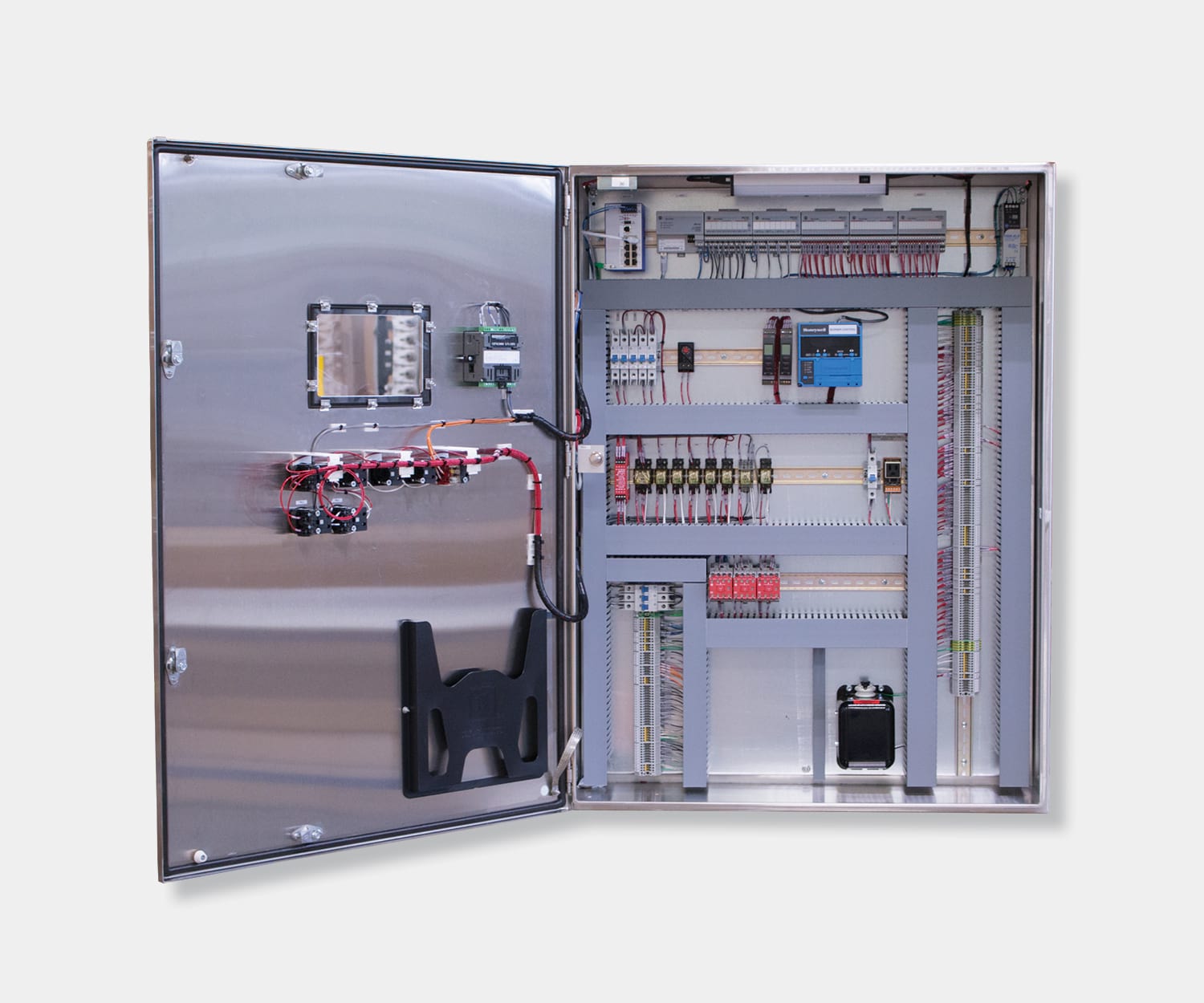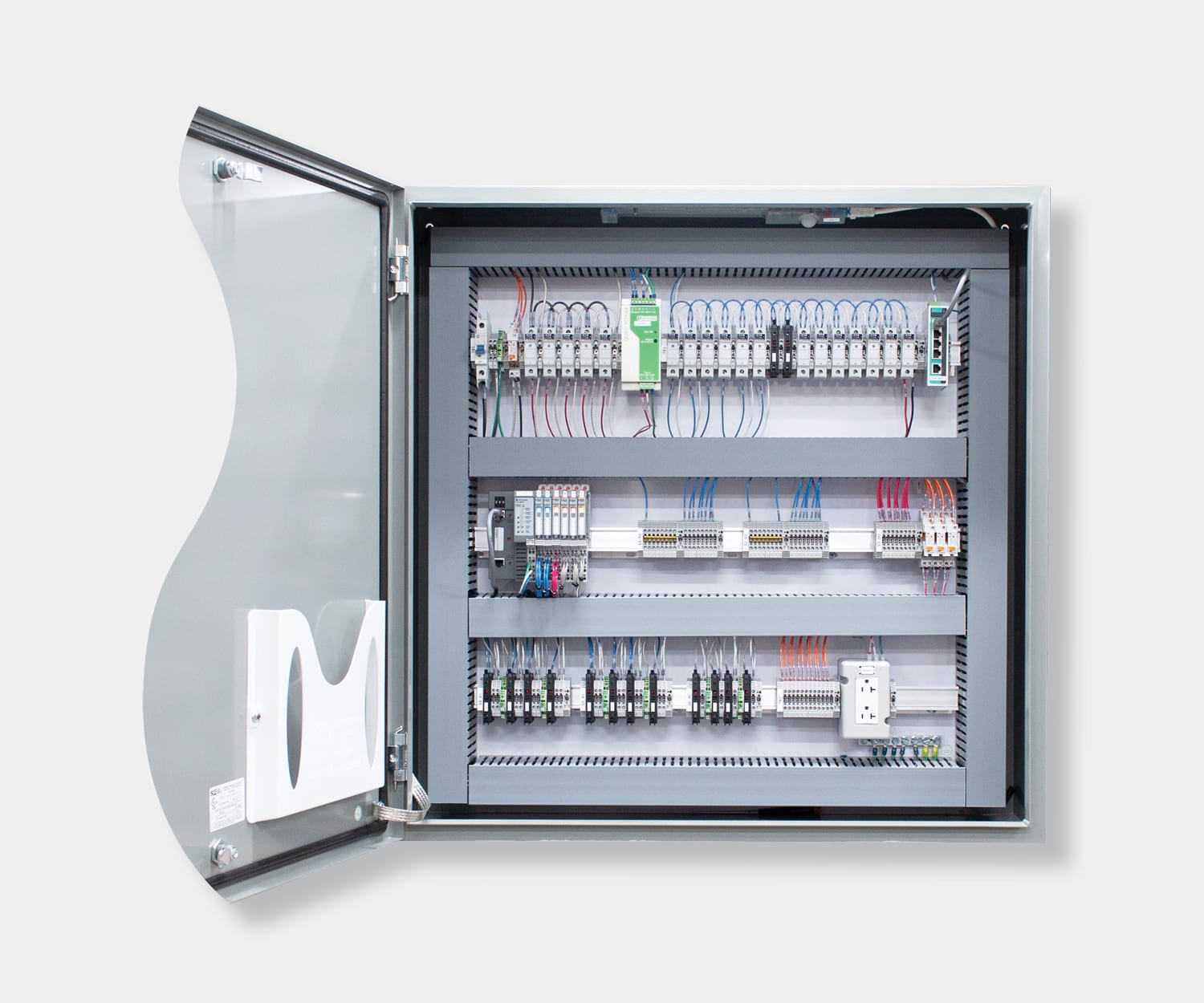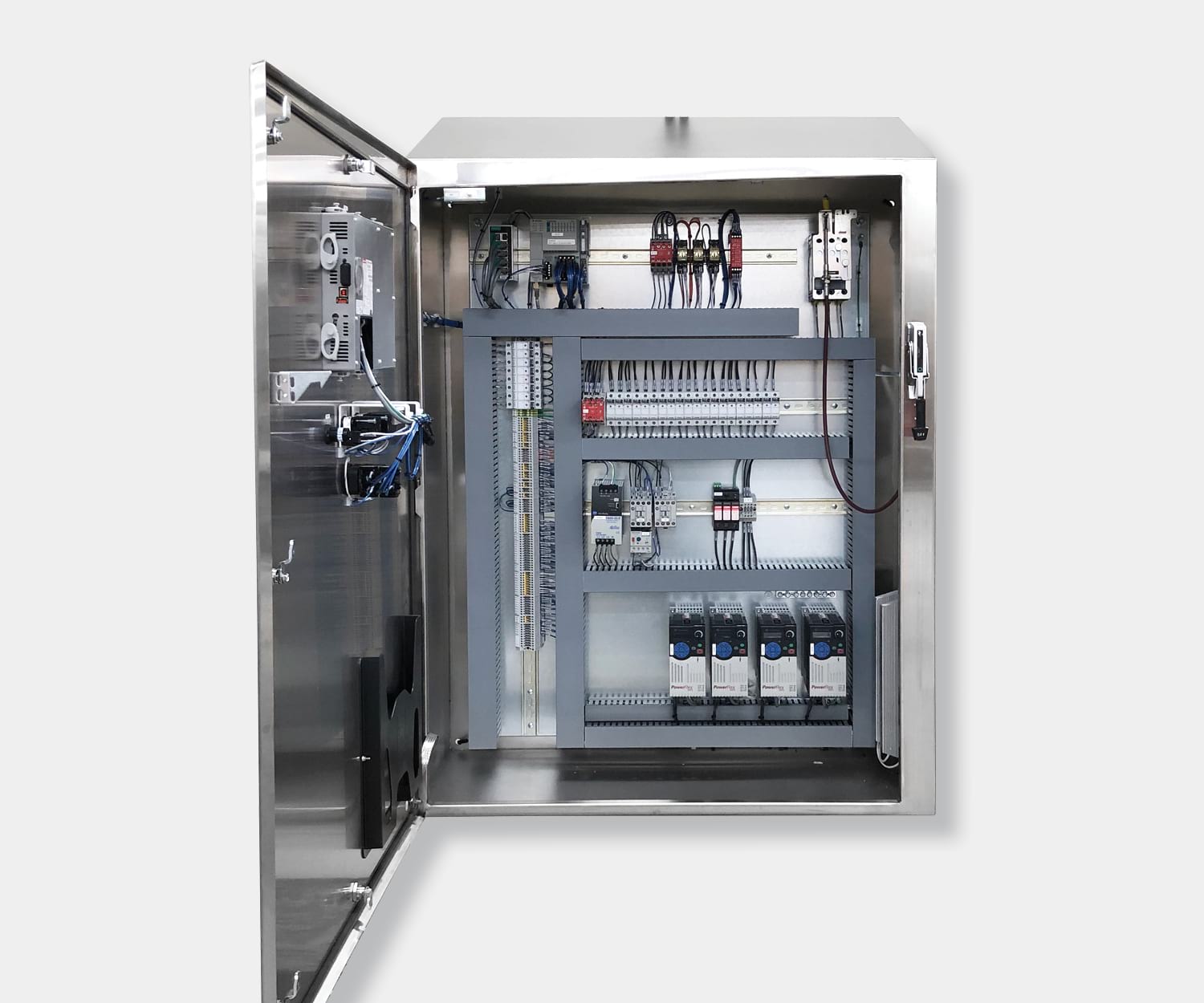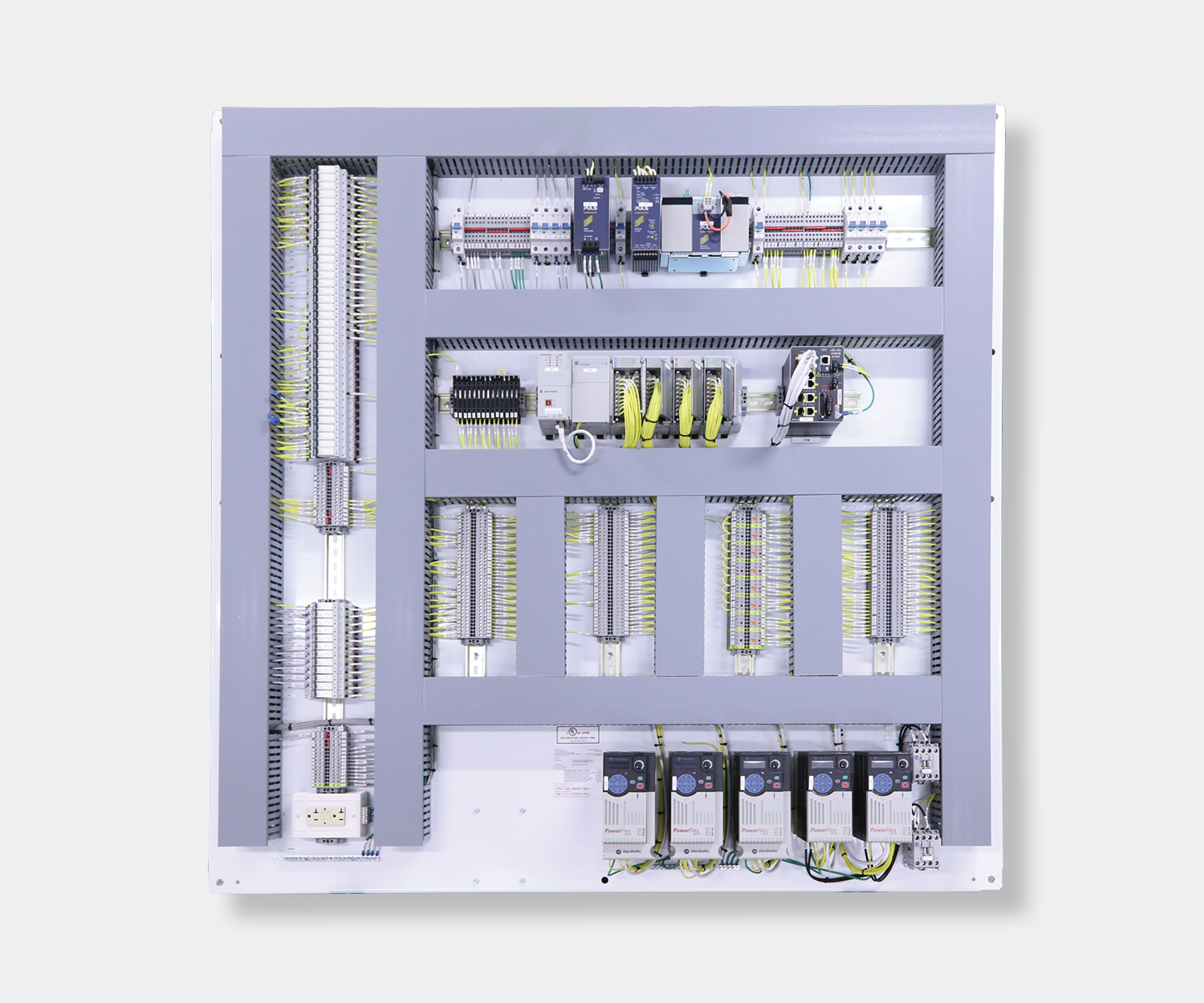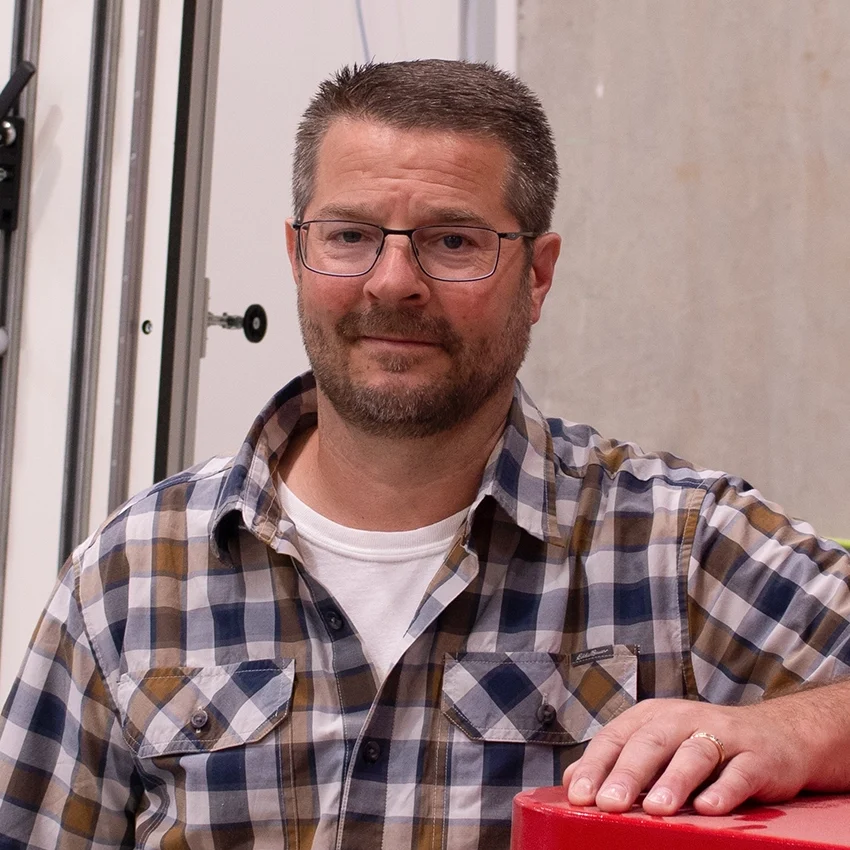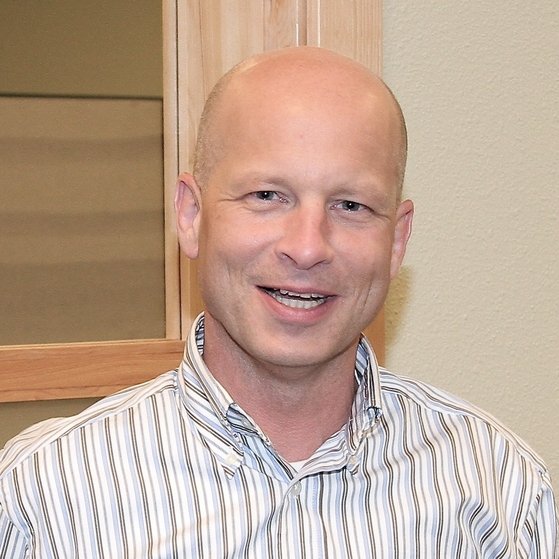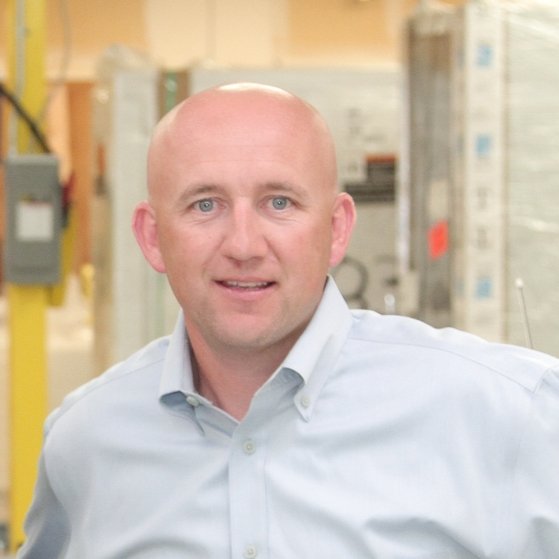Electrical control panels are an essential element of industrial automation and modern manufacturing. Responsible for providing electrical flow and automating the control of machinery and lines, control panels must be engineered and built to operate in industrial conditions reliably. Following these best practices for electrical control panels will lead to safer operation, easier maintenance, and room for future expansion.
Panel Organization and Sizing
A well-organized panel has components laid out in a logical order based on function and electrical requirements. For example, at Process Solutions, we often group circuit protection components in one portion of the panel or near the necessary devices. We then group drives together in another portion of the panel, and typically place the PLC near the top of the panel. Furthermore, components are often placed inside banks created by wireway to allow for short and clean wire runs. Utilizing wireway also ensures wires always run horizontally or vertically and prevents them from hanging in front of components or tangling.
Properly sizing your enclosure is another important aspect of control panel design. Selecting the right size enclosure will ensure all components fit properly and prevent collisions with door-mounted devices when closing the enclosure door. To address this challenge, Process Solutions utilizes 3D CAD software to model each panel layout to ensure proper sizing and eliminate the possibility of unforeseen component collisions after assembly. Allotting extra blank space in the panel may also be beneficial to allow for future expansion.
Finally, to promote safer operation, Process Solutions always places the emergency-stop (e-stop) button in a highly visible location on the panel door away from other buttons or interfaces. Keeping the e-stop separated from other interfaces ensures easy accessibility in an emergency and also prevents accidental engagement when interacting with the panel.
Wire and Device Labeling
To make it easier to identify and troubleshoot components or wiring issues, it’s good practice to always label each wire and device in an electrical control panel. Utilizing a consistent and logical syntax, such as an abbreviated prefix for each component type, will make identifying components and wires easier. For example, a circuit breaker label may always start with CB, while a power supply label would start with PS. Additionally, labels should be adhered in a clearly visible location on the front of a device, as well as each end of a wire.
Proper Enclosure Type
Selecting the right enclosure type for your electrical control panel’s environment or application is essential for ensuring safe and reliable operation. Enclosures can be built with a range of different materials and corresponding NEMA ratings. This includes mild steel, stainless steel, polycarbonate plastic, and aluminum.
Mild steel is a common material used for electrical enclosures and protects controls from wet, non-corrosive environments. Mild steel enclosures are offered in NEMA 1, 3, 4, 6, 12, and 13 ratings.
Polycarbonate plastic is an inexpensive and versatile material with high impact resistance. Polycarbonate plastic is suitable for both indoor and outdoor applications and is available in a range of NEMA ratings, including 1, 2, 4, 4X, 12, and 13.
Stainless steel is well suited for wet environments and is also fire resistant. However, stainless steel is also heavy and typically more expensive than alternative materials. Stainless Steel enclosures are offered in 3, 3R, 4, 4X, 12, and 13 NEMA ratings.
Aluminum is a durable material that is also able to withstand high temperatures. Aluminum also offers natural EMI/RFI shielding to prevent interference and is resistant to corrosion. Available NEMA ratings for Aluminum enclosures include 3, 3R, 4, 4X, 12, and 13.
Heat Dispersal
Proper heat dispersal is crucial for protecting the components and wiring in an electrical control panel. Causes of a control panel overheating include improper enclosure ventilation, being located outdoors where it’s exposed to sunlight or natural elements; indoor locations near hot machines, ovens or furnaces; or a buildup of dust and debris in the panel.
Several solutions can be implemented into the design of an electrical control panel to prevent overheating, including side-mounted air conditioners, vents, fans, and air to air heat exchangers. Each of these cooling methods works to maintain a constant temperature inside the panel and prevent overheating. Additionally, scheduled maintenance to remove dust and debris will help air circulate in the panel and further prevent overheating.
About Process Solutions
Located near Seattle Washington, Process Solutions is the Northwest’s largest control systems integrator. With 30+ years in business and over 100 engineers and technicians on staff, Process Solutions has the experience and capacity to take on almost any automation project. Process Solutions provides a wide range of control system services, including industrial electrical control panels, PLC and HMI programming, machine automation systems, energy management and refrigeration systems, SCADA software, and machine monitoring software.
